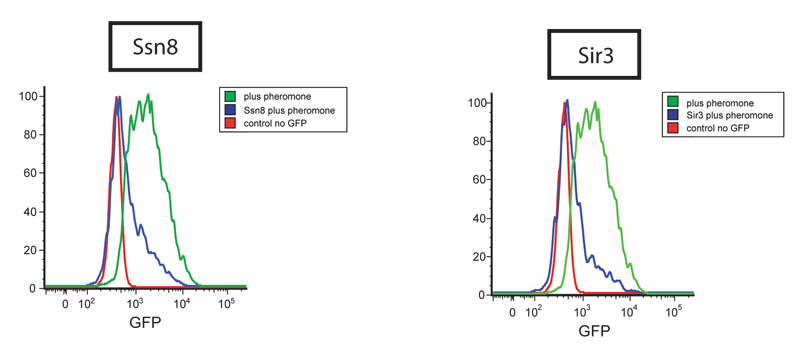Team:UCSF/Strengthening Silencing
From 2008.igem.org
(Difference between revisions)
| Line 1: | Line 1: | ||
| + | Silencing in S. cerevisiae is thought to be limited by the cellular pool of Sir3 (Hecht et al., 1996), and potentially other factors could be limiting. At the beginning of the summer, we conducted a small (20 gene), candidate-based screen for factors that, when overexpressed, enhance silencing. Sir3, not surprisingly, enhanced the function of a weakly silenced bit. Interestingly, Ssn8 also strongly enhanced silencing. Ssn8 is a component of the RNA Polymerase II holoenzyme that interacts with mediator (we chose it because it is positively associated with Telomere maintenance). | ||
| + | |||
| + | We used this result to "push" the weakly silenced Fig1P reporter into a fully silenced state. | ||
Revision as of 02:38, 30 October 2008
Silencing in S. cerevisiae is thought to be limited by the cellular pool of Sir3 (Hecht et al., 1996), and potentially other factors could be limiting. At the beginning of the summer, we conducted a small (20 gene), candidate-based screen for factors that, when overexpressed, enhance silencing. Sir3, not surprisingly, enhanced the function of a weakly silenced bit. Interestingly, Ssn8 also strongly enhanced silencing. Ssn8 is a component of the RNA Polymerase II holoenzyme that interacts with mediator (we chose it because it is positively associated with Telomere maintenance).
We used this result to "push" the weakly silenced Fig1P reporter into a fully silenced state.
| Home | The Team | The Project | Parts Submitted to the Registry | Modeling | Human Practices | Notebooks |
|---|
 "
"
